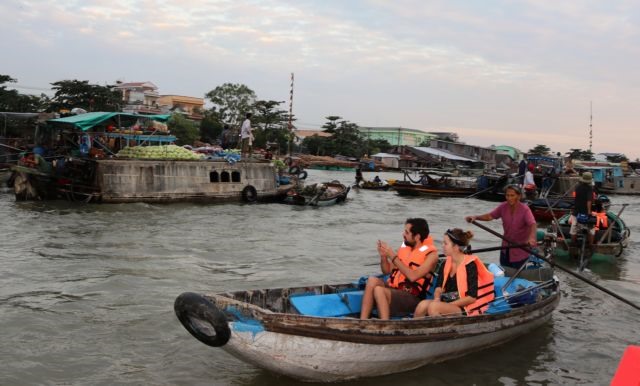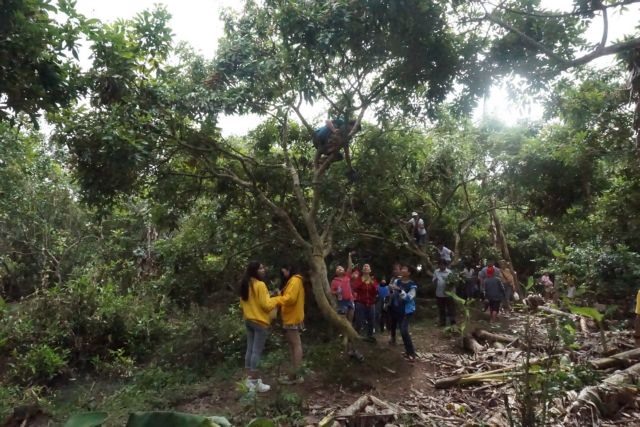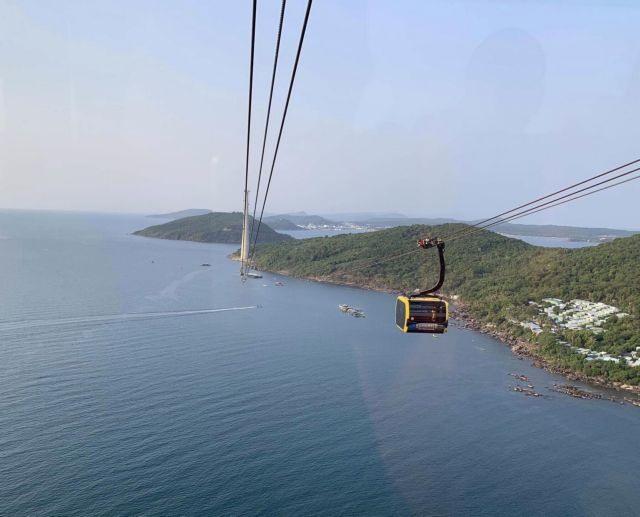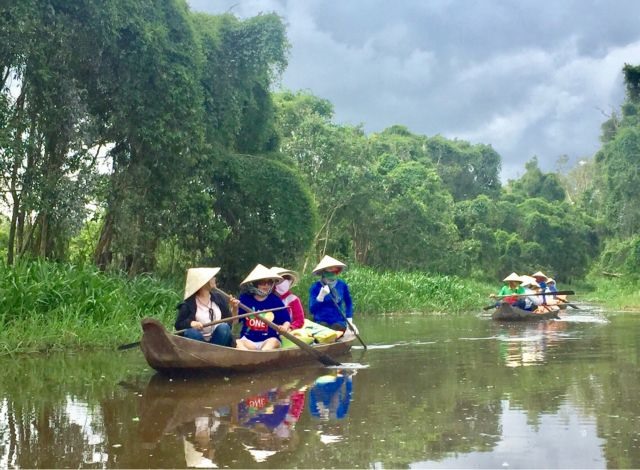Often referred to as the rice bowl of Việt Nam for its emerald-green rice paddies, the Mekong Delta is an alluring region rich in unspoiled countryside and peaceful rural settlements that attract nature and culture lovers.

Tourists at Cái Răng floating market in Cần Thơ City. VNS Photo Ngọc Diệp
Blessed with fertile land, the southern delta is criss-crossed by thousands of kilometres of rivers and canals and is home to many picturesque pagodas and ethnic communities.
The region's offerings are abundant, from countryside tours where you can experience the life of ethnic communities to tours of rice fields, orchards, vegetable gardens, fish farms and floating markets.
Visitors can also take part in spiritual tours to Bà Chúa Xứ Temple and the Bảy Núi (seven mountains) mountain range in An Giang Province, nature and wildlife tours at the Tràm Chim National Park in Đồng Tháp Province, and leisure tours at the white sandy beaches and islands of Kiên Giang Province.
Car holiday
In early September, Trần Sơn Hà from HCM City set out on a trip to the Mekong Delta with his family in a rented car for a two-day holiday. They first visited Bà Chúa Xứ Temple in An Giang’s Châu Đốc Town where dozens of other pagodas and temples can be found at the foot of Sam Mountain, a sacred place for Buddhists.
After stopping at the temple, they headed to Cấm (Forbidden) Mountain of the Seven Mountains range, and the highest peak in the delta, close to the Cambodian border.
In An Giang, they toured Trà Sư cajuput forest, about 30km from Châu Đốc Town, and home to hundreds of species of plants and birds.
The next morning, Hà and his family headed for the Cái Răng floating market, where boats on the river sell a variety of goods starting at 4am every day.
Only 10 minutes from the city centre, Cồn Sơn (Sơn Islet) is another well-known site with tranquil gardens, fish farms, and boat rides along narrow canals.
Hà's family walked along a rural road to experience the daily life of locals and sample traditional southern cakes and dishes.
“It's worth a visit to get a true taste of rural villages and local life along rivers and canals,” he said. “With its rice fields, orchards, boat-riding along small canals, and even buffaloes, it's so different from the city! It's a real escape from the hustle and bustle.”

Tourists eat fresh from the trees when they pay a visit to a local orchard in Cồn Sơn (Sơn islet) in Cần Thơ City. VNS Photo Thu Hằng
Among the area's popular dishes are bánh xèo (rice crepes) with wild vegetables, ốc nướng tiêu (grilled snails with pepper), cá lốc nướng trui (grilled snakehead fish) and lẩu mắm (salted fish hotpot).
“A two-day visit is not enough time to experience everything about the delta. I'll return to see other beautiful places,” Hà said.
During the summer, Hà's family also visited Phú Quốc Island by air, which is part of Kiên Giang, to relax for three days on white sandy beaches and enjoy fresh seafood.

Cable cars to Hòn Thơm (Pineapple Island) in Kiên Giang Province. VNS Photo Thu Hằng
Community-based tourism
Ten minutes from the centre of the delta's main city of Cần Thơ, the 70-ha Sơn Islet on the Hậu River is home to fish ponds and fruit gardens of various types such as rambutan, mango, pomelo, jackfruit, guava and star apple.
Over the past five years, community-based tourism has been developed on the islet, with nearly 30 households offering services.
Phan Thị Kim Lợi, who is part of the community-based tourism, said locals have opened their fruit gardens for tourists who can help cook special dishes and traditional cakes.
Tourists pay to visit sightseeing spots or take part in activities, including fruit gardens, fish catching, cake-making and boat riding at a cost of VNĐ15,000-20,000 (60 - 80 US cents) each. In addition, fruits are also sold at reasonable prices for visitors to bring home as gifts.
Đồng Tháp has experienced strong growth in community-based tourism. In recent years, many households have been offering homestays and welcoming visitors to their fruit and flower gardens as well as lotus lakes.
As many as 78 community-based tourism sites operate in the province, according to the provincial Department of Culture, Sports and Tourism.
In May, the Cồn Chim community-based tourism site in Trà Vinh Province’s Châu Thành District began to receive tourists on tour packages.
Nguyễn Trung Hoàng, deputy chairman of the provincial People’s Committee, said households had been provided financial support to develop homestays, eateries and transport facilities to serve tourists.

Boat rides on canals at the Gáo Giồng ecotourism site in Đồng Tháp Province are popular. VNS Photo Ngọc Diệp
Developing a local identity
Despite rich tourism resources, the delta’s tourism sector has developed at the slowest pace of other regions in the country, according to the Ministry of Culture, Sports and Tourism.
Kiên Giang Province and Cần Thơ City rank only 12th and 15th, respectively, among localities with a high number of foreign tourists.
Similar tourism products, ineffective marketing and promotions, and lack of trained human resources remain the major challenges for sustainable tourism development in the delta, tourism minister Nguyễn Ngọc Thiện said.
The number of foreign tourists to the region is just one-third of those in 14 central provinces.
Nguyễn Hữu Thọ, chairman of the Việt Nam Tourism Association, blamed poor transport infrastructure on the slow pace of tourism development. Transport via road, river, railway and air should be improved, he said.
Most localities in the delta offer tours of rivers, orchard gardens, fish farms and floating markets, said Nguyễn Quốc Kỳ, director of Vietravel.
Though all of these activities are popular, “each locality should create its own specific identity”, Kỳ said.
Lê Việt Hưng, deputy director of Travel Indochina, said that tourists often visited only two or three places, though there are multiple places to see and explore.
Foreign tourists on tour packages typically visit Việt Nam for 10-12 days and spend one night in HCM City, and then take a day trip to Tiền Giang Province or Bến Tre Province.
They return to HCM City for an overnight stay and then move onward to Hội An before flying to Hà Nội or northern provinces.
Some visitors travelling by land often add Cambodia to their trip. They first visit Cần Thơ City for a day before crossing the border to Cambodia the next day.
Nguyễn Việt Phường, director of Cần Thơ City’s Department of Culture, Sports and Tourism, said the city was diversifying its offerings to appeal to more visitors and has also supported community-based tourism sites.
Phường said that each locality in the delta is striving to identify its specialties to create an identity that can be distinguished from others in the region.
River cruises
"Although prices of river cruises are much more expensive than land tours, they are the favourite choice of foreign tourists," Hưng, deputy director of Travel Indochina, said.
Many cruise lines that operate between HCM City and Phnom Penh in Cambodia offer shore excursions to explore rural villages along rivers.
Some cruise vessels embark on trips in Tiền Giang and cruise along the Mekong River and sail into Cambodia, he said.
Phạm Thế Triều, deputy director of An Giang Province’s People’s Committee, said most of the cruises were foreign-owned and operated.
Waterway tourism has huge potential, but localities in the delta have yet to tap it, he said, adding that most river cruises are operated by large cruise lines.
Despite the area's shortcomings, the delta has an abundance to offer and highlighting the differences among its localities will be important for tourism to thrive in a sustainable way.
The variety is stunning: festivals and spiritual tourism in An Giang; islands with sandy beaches, national parks and mangrove ecology in Kiên Giang; floating markets in Cần Thơ and Tiền Giang; coconut and fruit orchards in Bến Tre; and views at the southernmost point of Việt Nam in Cà Mau Province are only some of the riches on offer.
Thu Hằng